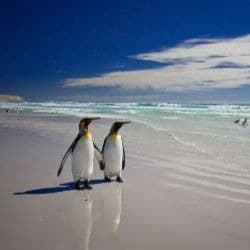Adelie Penguins Populations Expected To Rise

If you are a penguin lover then there is some great news. Glaciers in the East Antarctica region have been shrinking which has resulted in a higher birth rate of the Adelie penguin. According to research over the last 14,000 years the population of Adelie penguins has expanded by as many as 135 times, largely as a result of more breeding sites coming online as glaciers retreat. The explosion in the penguin population suggests that the present conditions of the environment are more favourable to the Adelie penguin when compared to the end of the last ice age.
“Shrinking glaciers appear to have been a key driver of population change over millennia for Adelie penguins in East Antarctica,” said Jane Younger from University of Tasmania in Australia who led the study.
Climate change is the driver
When we study the response of these birds to previous climate change events, it is possible to predict how well the species of penguin will respond in future she adds. Until now the research has only looked at short term changes that take place of years or decades, however the climate change that is taking place today is likely to have effects spanning millennia
“We need to consider millennial-scale trends alongside contemporary data to forecast species’ abundance and distribution changes under future climate change scenarios,” Younger noted.
Effects will not be consistent
Despite the massive rise in numbers of penguins, the research suggests that the impact of climate change will be far from consistent. There will be large geographic variability which means distant populations of Adelie penguins will see very different environmental impacts. The authors of the study believe that in some parts of Antarctica, penguin numbers may actually decline.
Over a million breeding pairs
30 per cent of the global population of Adelie penguins live in East Antarctica and it is estimated there are about 1.14 million breeding pairs. As climate change continues it is expected that ice sheets and glaciers in Antarctica will retreat further. The penguin species are very sensitive to changes in sea ice because they combine to create breeding colonies on land which is free from ice along the coast of the continent and forage for food in the pack ice when mating season takes place.



